Introduction
Japanese history spans thousands of years, from prehistoric hunter-gatherer societies to the formation of a unified state. This first part of our series on Japanese History explores four foundational eras: the Jomon, Yayoi, Kofun, and Asuka periods. Each laid a critical foundation for Japan’s social structure, culture, and belief systems that continue to influence the nation today.
Jomon Period (c. 14,000 – 300 BCE)
Overview
The Jomon period marks Japan’s earliest known culture, characterized by a hunter-gatherer lifestyle and distinctive pottery decorated with cord patterns (the word Jomon literally means “cord-marked”).
Social and Cultural Characteristics
- Lifestyle: People lived in pit dwellings and relied on hunting, fishing, and gathering.
- Innovation: Pottery was used for storage and cooking—among the oldest in the world.
- Community: Settlements emerged near coasts and rivers, with evidence of early social organization and rituals.
Symbolic Events and Figures
- San’nai Maruyama Site (Aomori Prefecture): A major archaeological site showcasing large-scale Jomon settlements.
- Dogu Figurines: Symbolic of early religious or spiritual beliefs, possibly related to fertility rites.
Influence on Modern Japan
Jomon values of harmony with nature and communal living resonate in Japan’s modern aesthetics, Shinto beliefs, and sustainable design philosophy.

Yayoi Period (c. 300 BCE – 250 CE)
Overview
The Yayoi period introduced wet-rice agriculture, metal tools, and social stratification, transforming Japan from small, scattered communities into organized agricultural societies.
Social and Cultural Characteristics
- Agriculture: The spread of wet-rice cultivation from northern Kyushu revolutionized food production and population growth.
- Social Hierarchy: Agricultural surplus led to class differentiation—leaders, warriors, and farmers began to emerge as distinct groups.
- Technology and Tools: The use of bronze for rituals and iron for tools and weapons marked a leap in craftsmanship and warfare capability.
- Trade and Exchange: Contact with the Korean Peninsula and China facilitated the introduction of metallurgy, weaving, and new crops.
Symbolic Events and Figures
- Yoshinogari Archaeological Site (Saga Prefecture):
One of Japan’s largest and best-preserved Yayoi settlements, Yoshinogari provides concrete evidence of moated villages, raised-floor storehouses, watchtowers, and a social hierarchy.Artifacts such as bronze mirrors, iron weapons, and rice paddies indicate strong trade ties with the Asian continent and the rise of political power centers. - Himiko, the shaman-queen of Yamatai Kingdom, is believed to have ruled through spiritual authority. Her diplomatic contact with China’s Wei dynasty (recorded in the Wei Zhi) shows Japan’s early international relations.
- Bronze Bell (Dotaku): Used in rituals for agricultural fertility and weather prayers, symbolizing the fusion of spirituality and agriculture.
Influence on Modern Japan
The Yayoi period laid the foundation for Japan’s agricultural society, governance systems, and craftsmanship. The Yoshinogari site continues to be an invaluable educational and cultural resource, offering insight into early Japanese community organization and diplomacy.
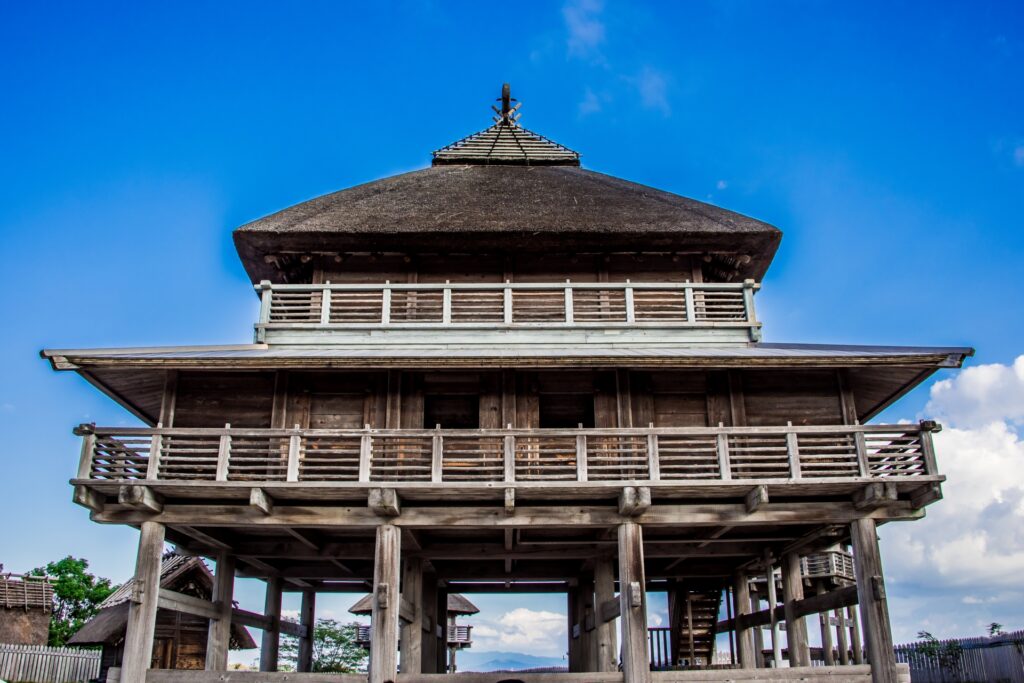
Kofun Period (c. 250 – 538 CE)
Overview
The Kofun period is named after the massive burial mounds (kofun) built for rulers, signifying political centralization and the rise of the Yamato state.
Social and Cultural Characteristics
- Political Structure: Emergence of powerful clans (uji) and the imperial lineage in Yamato (modern Nara).
- Cultural Exchange: Interaction with Korea and China introduced new technologies and administrative systems.
- Art and Architecture: Keyhole-shaped tombs and haniwa clay figures represent the era’s artistry.
Symbolic Events and Figures
- Emperor Sujin and Emperor Ojin: Legendary figures tied to early state formation.
- Haniwa Figures: Placed around tombs to protect the deceased and display social hierarchy.
Influence on Modern Japan
The imperial tradition and state-centered ideology that began in this era continue to shape Japan’s political identity and national symbolism.
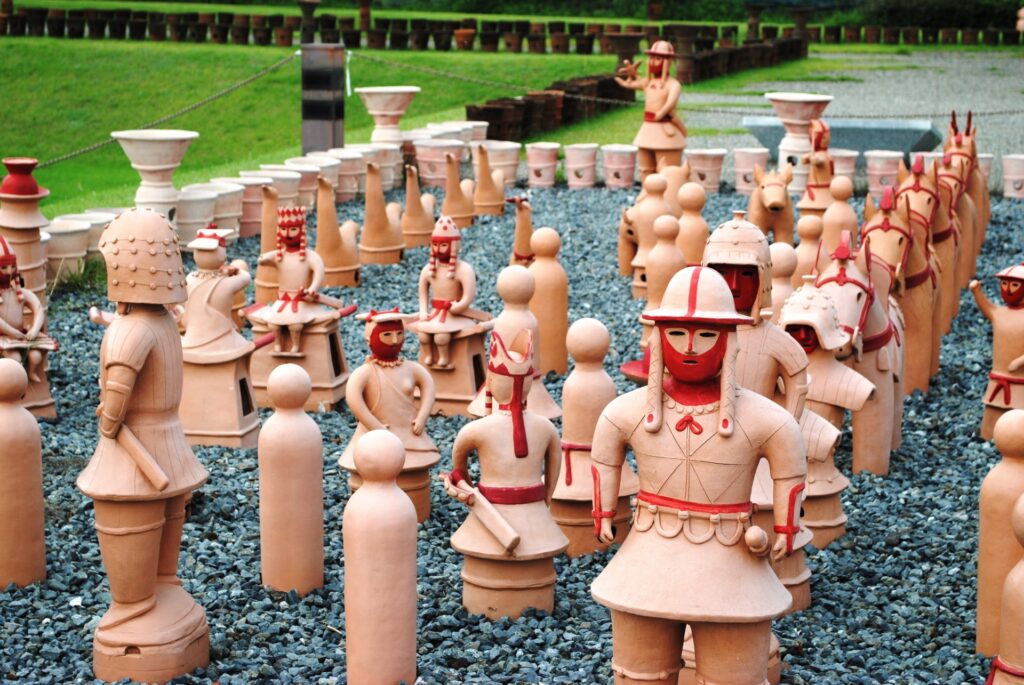
Asuka Period (538 – 710 CE)
Overview
The Asuka period marks Japan’s transition to a centralized state under strong Buddhist and Chinese cultural influence.
Social and Cultural Characteristics
- Religion: Buddhism was introduced from Baekje (Korea) in 538, transforming art, architecture, and politics.
- Governance: Prince Shōtoku implemented the Seventeen-Article Constitution, blending Confucian and Buddhist principles.
- Art and Culture: The Asuka style in sculpture and temple architecture flourished.
Symbolic Events and Figures
- Prince Shōtoku (574–622): Promoted Buddhism and established diplomatic ties with the Sui dynasty.
- Hōryū-ji Temple: One of the world’s oldest wooden structures, symbolizing early Buddhist architecture.
Influence on Modern Japan
The Asuka period laid the groundwork for Japan’s centralized government, legal systems, and religious tolerance, shaping the nation’s long-term cultural identity.

Summary
From the Jomon’s harmonious coexistence with nature to the Asuka’s embrace of Buddhism and governance reforms, these four periods illustrate Japan’s evolution from tribal communities to an organized state. Understanding these roots offers insight into the continuity of Japanese values—respect for nature, social harmony, and innovation within tradition.
About Our Site & Hotel Recommendations
Our site provides detailed area-based sightseeing guides for Tokyo travel. We offer insights on culture, food, and events in neighborhoods such as Roppongi and Asakusa, helping visitors make the most of Tokyo Travel.
If you are looking for hotels near these events and attractions, check out the following:
- Shinjuku area hotels: here
- Shibuya area hotels: here
- Roppongi area hotels: here
- Asakusa area hotels: here
- Shinagawa area hotels: here
The Wonderful Travel Tips
Yuichi Yokoyama
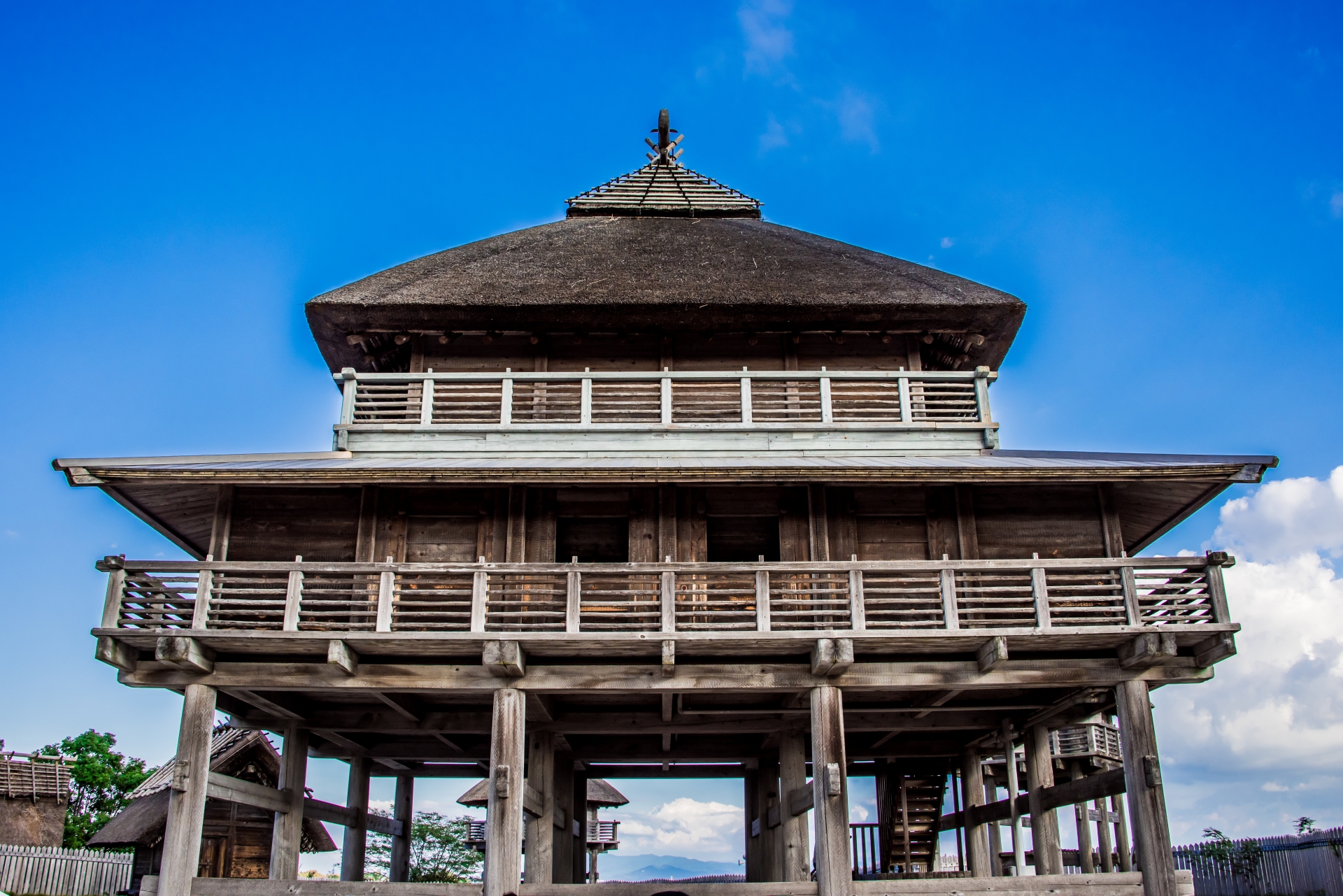
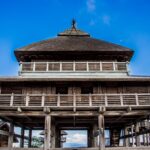
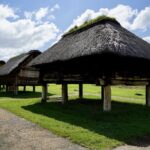

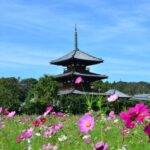

コメント